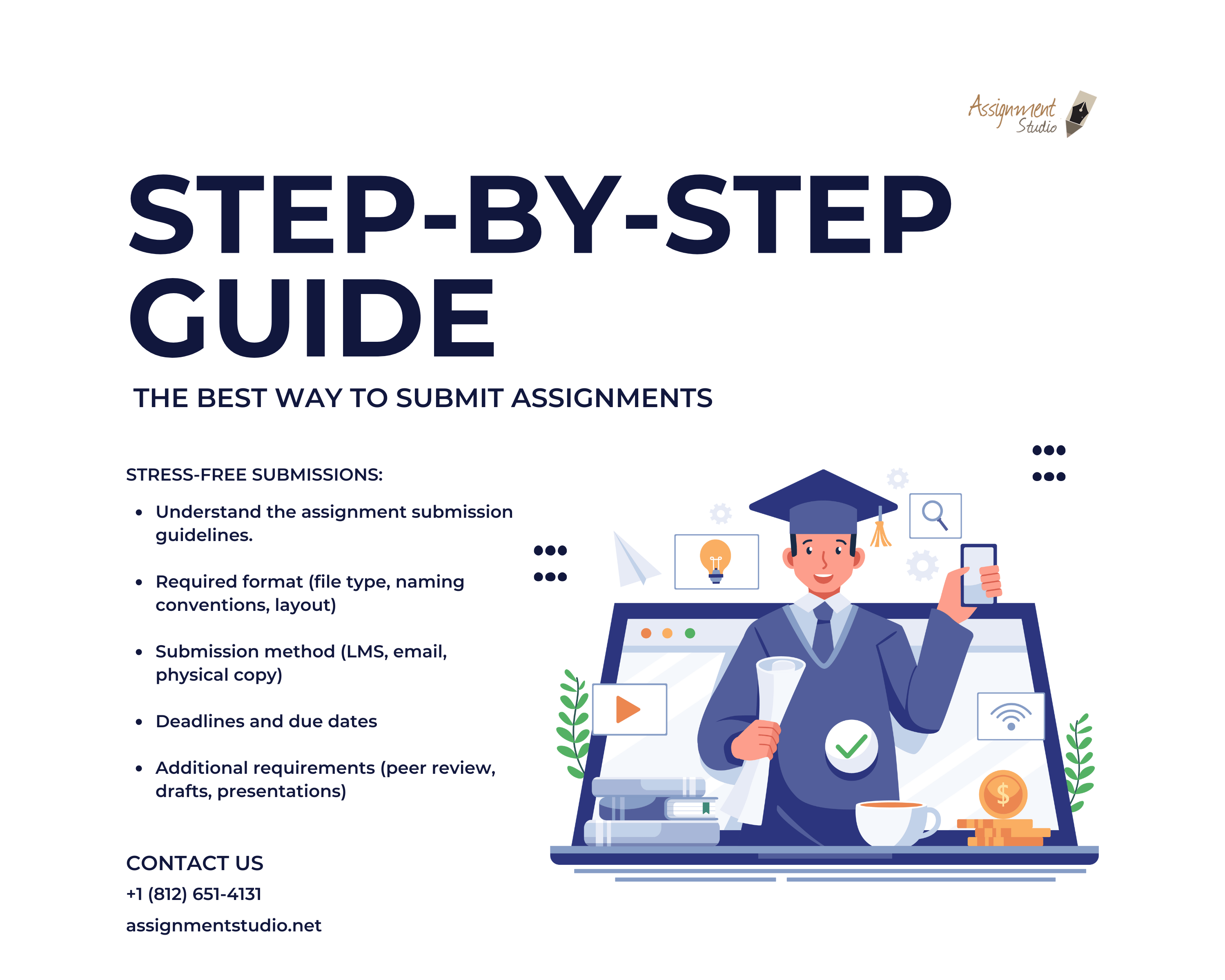
Submitting assignments can be a nerve-wracking experience for many students. Whether you’re a high school, college, or graduate student, ensuring your work is properly submitted is crucial for academic success. In this comprehensive guide, we’ll walk you through the best practices and step-by-step instructions for submitting your assignments, from understanding the requirements to sending the perfect email to your instructor.
Table of Contents
Understanding Assignment Submission Guidelines
Before you even begin working on an assignment, it’s essential to thoroughly review the homework submission tips and guidelines provided by your instructor. Pay close attention to the following details:
1. Submission Format
Your instructor may have specific requirements for the format of your assignment, such as:
- File type (e.g., PDF, Word document, spreadsheet)
- Naming conventions for your file
- Page layout (e.g., margins, font size, spacing)
- Inclusion of a cover page or title page
2. Submission Method
There are several common ways to submit assignments, including:
- Uploading to a learning management system (LMS) like Canvas or Blackboard
- Emailing the assignment directly to your instructor
- Submitting a physical copy in person or through the campus mail
3. Deadlines and Due Dates
Pay close attention to the due date and time for your assignment. Many instructors have strict policies regarding late submissions, so it’s crucial to plan accordingly.
4. Additional Requirements
Some assignments may have additional requirements, such as:
- Peer review or collaboration with classmates
- Submission of an outline or draft before the final version
- Presentation or oral component to accompany the written work
Step-by-Step Guide to Submitting Assignments
1. Complete the Assignment
Before you can submit your work, you’ll need to ensure that it’s completed to the best of your ability. Follow these tips for producing a high-quality assignment:
- Understand the prompt: Carefully read and interpret the assignment instructions to ensure you’re addressing all the required elements.
- Conduct thorough research: Use reliable sources to gather information and support your arguments or findings.
- Organize your thoughts: Create an outline or structure to help you organize your ideas in a clear and logical manner.
- Write and revise: Compose your assignment, then take the time to review and edit your work to improve clarity, coherence, and overall quality.
- Proofread: Check for any spelling, grammar, or formatting errors before submitting your assignment.
2. Prepare the Assignment for Submission
Once your assignment is complete, you’ll need to prepare it for submission. Follow these steps:
2.1. Format the Assignment
Ensure that your assignment meets the formatting requirements set by your instructor. This may include:
- Proper margins, font size, and line spacing
- Inclusion of a cover page or title page
- Correct citation style (e.g., APA, MLA, Chicago)
- Appropriate file naming conventions
2.2. Save the Assignment
Save your assignment in the required file format, such as a PDF or Microsoft Word document. If you’re submitting multiple files, make sure to label them clearly and consistently.
3. Submit the Assignment
The method of submission will depend on the instructions provided by your instructor. Here are the most common ways to submit an assignment:
3.1. Upload to a Learning Management System (LMS)
Many schools and universities use learning management systems like Canvas, Blackboard, or Moodle to facilitate assignment submissions. Follow these steps:
- Log in to your LMS account and navigate to the appropriate course.
- Locate the assignment you need to submit and click on the “Submit Assignment” or similar button.
- Follow the on-screen instructions to upload your file(s).
- Review the submission to ensure it was successful.
3.2. Email the Assignment to Your Instructor
If your instructor has requested that you email your assignment, follow these guidelines:
- Compose a clear, professional email with a subject line that includes the course name, assignment title, and your name (e.g., “ENGL 101 – Final Essay Submission – [Your Name]”).
- Attach your assignment file(s) to the email.
- Include a brief message in the body of the email, such as “Dear Professor [Name], please find my [assignment name] attached. Let me know if you have any questions or need anything else from me.”
- Double-check that the attachment(s) have been included before sending the email.
3.3. Submit a Physical Copy
In some cases, your instructor may require you to submit a physical copy of your assignment. Here’s how to handle this:
- Ensure that your assignment is printed and properly formatted according to the instructions.
- Place the assignment in a clean, unmarked folder or envelope.
- Clearly label the outside of the folder/envelope with your name, the course name, and the assignment title.
- Submit the physical copy to your instructor’s office or the designated drop-off location by the due date and time.
4. Confirm Successful Submission
After submitting your assignment, it’s crucial to confirm that it was received successfully. Depending on the submission method, you can do this in the following ways:
4.1. LMS Submission
Most LMS platforms will provide a confirmation page or email once your assignment has been successfully uploaded. Review the submission details to ensure the file(s) were received.
4.2. Email Submission
If you emailed your assignment, wait for a reply from your instructor confirming receipt. If you don’t receive a response within a reasonable timeframe, follow up with a polite email inquiring about the status of your submission.
4.3. Physical Submission
For physical submissions, you may want to request a receipt or acknowledgment from the instructor or department, or make a copy of the assignment before submitting the original.
Tips for Successful Assignment Submission
1. Submit Early
Don’t wait until the last minute to submit your assignment. Aim to have it completed and submitted at least a day before the due date to allow for any unexpected delays or technical issues.
2. Double-Check the Submission
Before finalizing your assignment submission, carefully review the following:
- Ensure you’ve included all required files or components.
- Verify that the file(s) are properly formatted and named.
- Confirm that you’ve followed all the instructions for the submission method.
3. Keep a Copy
Always keep a backup copy of your assignment, either in digital or physical form. This will come in handy if there are any issues with the submission or if your instructor requests revisions.
4. Communicate with Your Instructor
If you encounter any problems or have questions about the submission process, don’t hesitate to reach out to your instructor. Many instructors are willing to provide guidance and support to help ensure a successful submission.
5. Follow Up on Late Submissions
If you’re submitting your assignment late, be proactive in communicating with your instructor. Provide a clear explanation for the delay and inquire about any potential penalties or alternative arrangements.
Writing the Perfect Email to Your Instructor for Assignment Submission
If your instructor has requested that you submit your assignment via email, it’s important to craft a professional and polite message. Here’s a step-by-step guide:
Subject Line
The subject line should be clear and concise, indicating the course, assignment title, and your name. For example: “ENGL 101 – Final Essay Submission – [Your Name]”
Greeting
Address your instructor using their appropriate title (e.g., “Dear Professor Smith,” “Hello Dr. Jones,” “Hi Ms. Garcia”).
Body of the Email
In the body of the email, include the following information:
- A brief introduction: “I hope this email finds you well. I am writing to submit my [assignment name] for your [course name] class.”
- A statement confirming the attachment: “Please find the assignment attached to this email.”
- A polite closing: “Thank you for your time and consideration. Please let me know if you have any questions or need anything else from me.”
Signature
End your email with a professional signature that includes your full name, contact information (phone number and/or email), and any other relevant details (e.g., student ID number).
Attachment
Double-check that you have attached the correct file(s) before sending the email.
By following these guidelines, you can ensure that your assignment submission email is clear, professional, and sets a positive tone for your interaction with your instructor.
Common Challenges and How to Overcome Them
Technical Issues
If you encounter any technical problems during the submission process, such as file upload errors or email delivery issues, don’t panic. Here’s what you can do:
- Try a different method: If one submission method isn’t working, see if you can use an alternative option (e.g., email instead of LMS upload).
- Reach out to IT support: Contact your school’s IT or helpdesk team for assistance in resolving any technical problems.
- Document the issue: Keep a record of the error messages, screenshots, or any other relevant information in case you need to provide it to your instructor.
Missed Deadlines
If you’re unable to submit your assignment by the due date, take the following steps:
- Communicate with your instructor: Inform your instructor about the situation as soon as possible and request an extension.
- Explain the reason: Provide a clear and honest explanation for the delay, avoiding excuses and taking responsibility.
- Propose a solution: Suggest a reasonable new deadline and commit to submitting the assignment by that date.
- Follow up: If your instructor grants an extension, make sure to submit the assignment by the new due date.
Academic Integrity Concerns
If you’re unsure about the appropriate way to cite sources or are worried about the potential for plagiarism, consider the following:
- Review citation guidelines: Familiarize yourself with the citation style (e.g., APA, MLA) required by your instructor and ensure you’re properly attributing all borrowed ideas and information.
- Use plagiarism-checking tools: Many schools provide access to plagiarism detection software, which can help you identify any unintentional plagiarism in your work.
- Consult with your instructor: If you have any lingering questions or concerns about academic integrity, don’t hesitate to reach out to your instructor for guidance.
By addressing these common challenges proactively, you can ensure a smooth and successful assignment submission process.
Conclusion
Submitting assignments can be a daunting task, but with the right strategies and preparation, you can approach it with confidence. Remember to thoroughly understand the submission guidelines, follow the step-by-step process, and communicate effectively with your instructor. By mastering the art of assignment submission, you’ll set yourself up for academic success and demonstrate your commitment to your studies.
If you have any additional questions or need further assistance, don’t hesitate to reach out to your instructor, academic advisor, or campus resources. They’re here to support you throughout your educational journey.
Good luck with your upcoming assignments!






